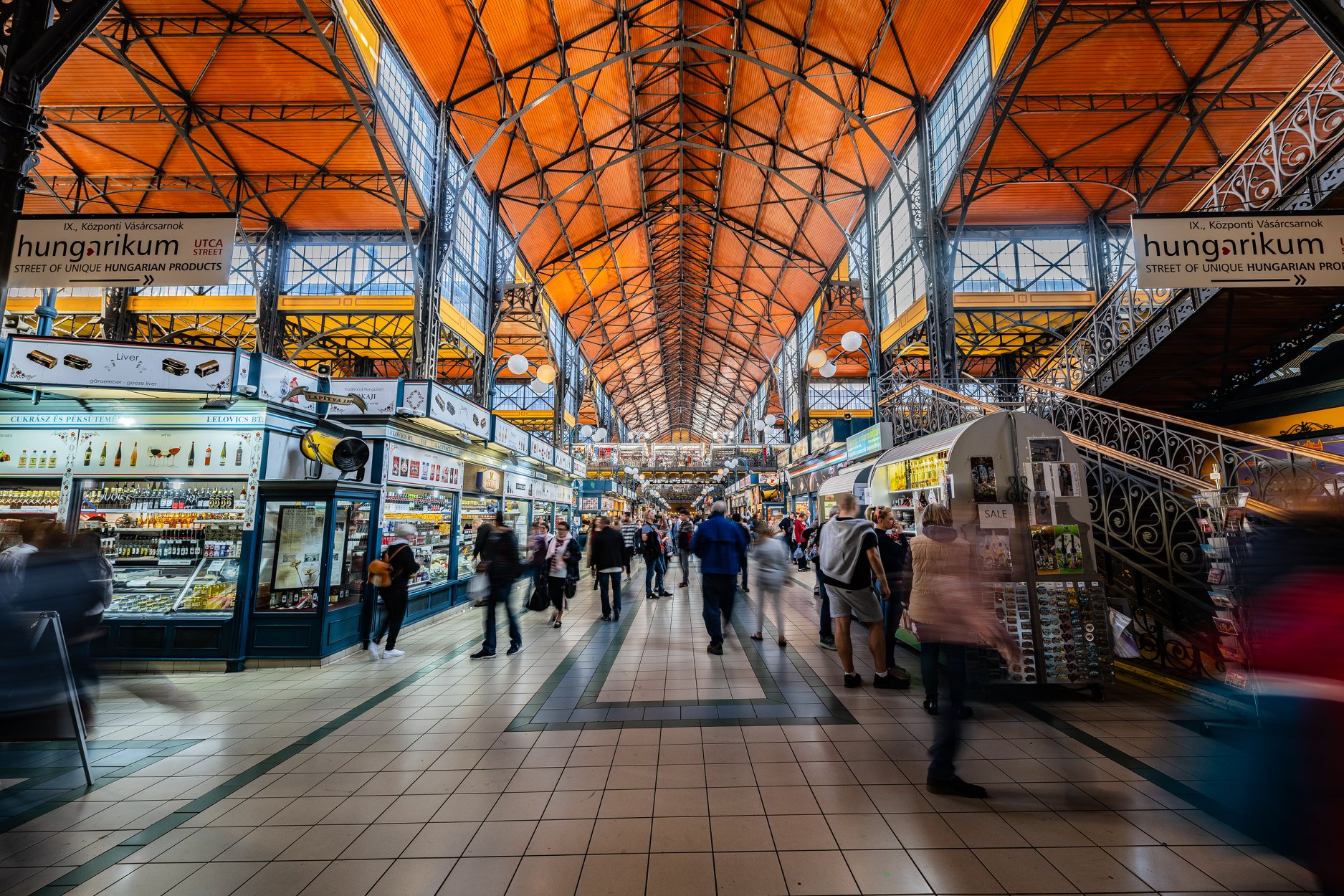
Central Market Hall Budapest food is the best! Ultimate guide to the Great Market Hall!
O
C
Many say that the Central Market Hall Budapest food is the most delicious, and the spectrum of delicacies available indeed embraces a colorful range. In our current article, we take a closer look at the offerings of the Great Market Hall, which is the largest and oldest indoor market of the Hungarian capital.
As a capital with colorful history and a unique geographical location in the middle of Europe, it didn’t take long for Budapest to become a growing and quickly developing city in the 19th century. The growth of the population brought about the demand for market halls within the city, the most famous of which was, and still is, the Central Market Hall (Központi Vásárcsarnok or Vasarcsarnok Market Budapest). Also called the Great Market Hall (Nagycsarnok), it’s the largest and oldest indoor market in Budapest to this day. Its matchless location at Fővám tér, right next to the Danube, the Liberty Bridge, and the southern end of the popular pedestrian street, Váci utca, make it the perfect anchor point of every tourist map.
Traditional Hungarian cuisine: paprika, lángos and other fine food
If you find yourself craving for a unique culinary and cultural experience, don’t miss out on the Central Market Hall while in Budapest. Its stunning architecture makes it worth a visit even if you’re not in for the variety of fruits, vegetables, dairy, fish, meat, spices, pickles, and more. And the best part? Even CNN called it the best market in Europe. Read on to see why the Central Food Market Budapest is so popular!

Dive into the history of Great Market Hall in Budapest
By the last decades of the 1800s, the growing population and the worsening public safety put an end to traditional marketplaces in Budapest. To follow the Western-European trend of indoor markets, the Hungarian capital started to establish its own market halls. Altogether five indoor markets were founded in Budapest to provide quality food and a secure venue for the daily exchange of goods. The first of these was Central Market Hall, thought up by the then mayor of Budapest, Károly Kamermayer. As his biggest project, the market came to life with a grand opening ceremony in 1897.
Designed by Samu Petz, the prestigious building got all the splendor the era could provide from wrought-iron structure to the iconic Zsolnay ceramic tiles. It emerged as an exceptional example of brick architecture with a hint of the neo-Gothic. The building takes up an impressive 10,000 square meters split into two sideways. Traditionally, one was for the wholesalers, and another for the retailers.
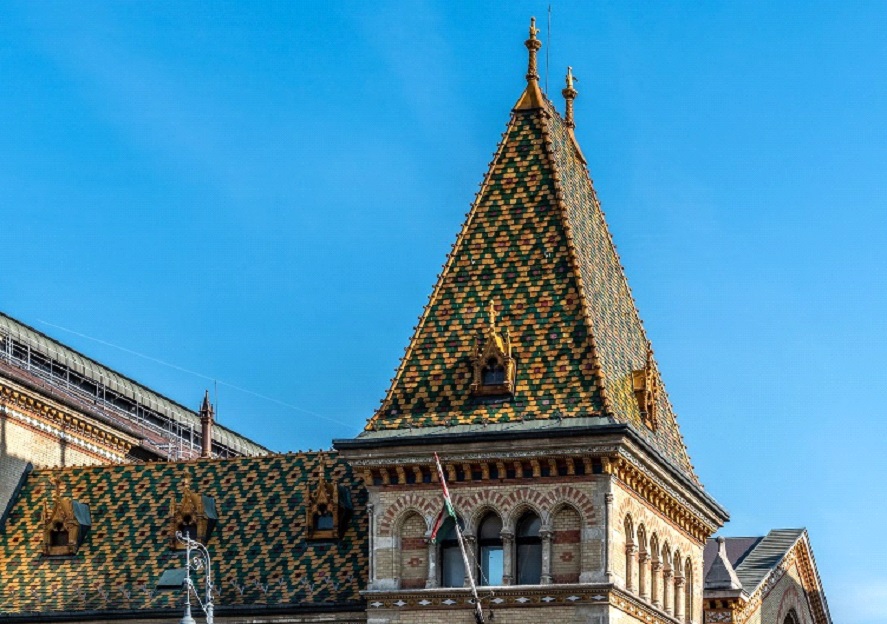
It was not by chance that the market hall was built at Fővám tér. Not only was the location close to the river – which was key because goods were transported on the Danube –, but it also marked the border of two parts of the city, the downtown and Ferencváros, one of the main industrial areas of Budapest. No wonder Fővám tér still is one of the most popular meeting points in the inner city for walking tours, hop-on hop-off bus tours, or just the students of the neighboring Corvinus University.

However, its strategic location couldn’t make the market an instant success. Not everyone was happy about the arrival of the first indoor market hall to Budapest. Ever since its inauguration, the Central Market Hall has been deeply criticized by the locals for the high prices, which reached their peak during World War I. A few decades later, amid the vast devastation World War II caused to the city, the market hall also got destroyed. In the following years, the building stayed abandoned and started its slow but inevitable decay. It was not until 1991 that a thorough renovation restored the market to its old glory. The building reopened in 1997 and, with a growing number of architectural acclaims, it has become one of the most prestigious public facilities in Budapest. In 2013, CNN called it the best market in Europe, ranking it ahead of the Istanbul Bazaar or the great markets of London.
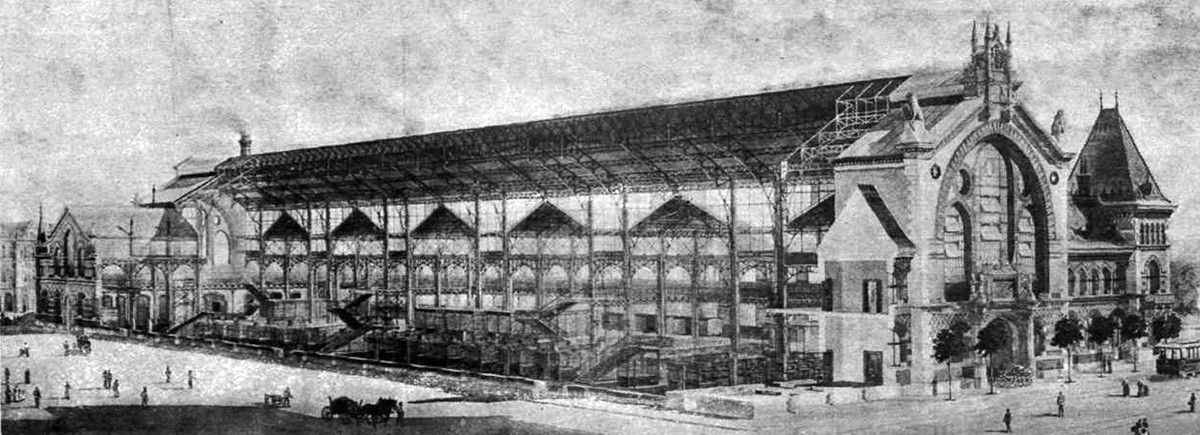
Step inside the 3-storey Budapest Market Hall
The original design of the market included a central canal which provided a constant flow of fresh goods. Even if the canal is now a thing of the past, there still are plenty of fruits, vegetables, meat, sausage, pastry and other goods from local farmers on display on the ground floor. To get the full experience, let yourself be carried away by the hustle of the vendors and the vibrant colors of the strings of dried paprika and garlic by the stalls.
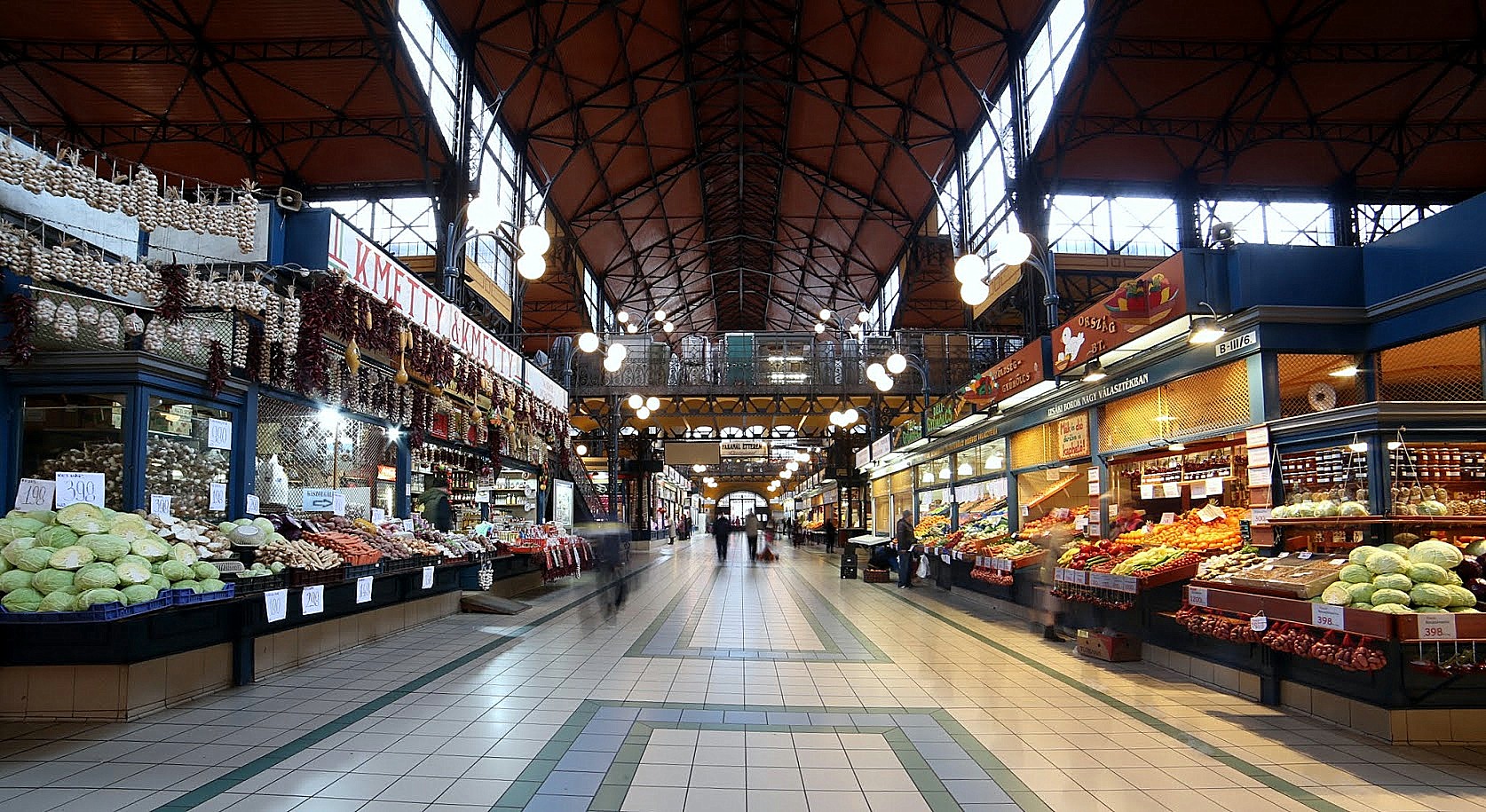
If you need a break from the busy main floor, descend to the basement and discover pickle heaven. Besides fishmongers and game stalls, you will find all things fermented here: gherkins, pearl onions, spicy apple-paprika, Hungarian paprika, fermented cauliflower, pickled baby melons, paprika stuffed with cabbage, you name it. In case you’re wondering, Hungarians love their pickles. Gherkins (kovászos uborka) may well be the locals’ best-kept secret, but be warned: you’ll either love it or hate it. Of course, if you are looking for the famous authentic Hungarian sour cream, you can find it here in many variations as well.
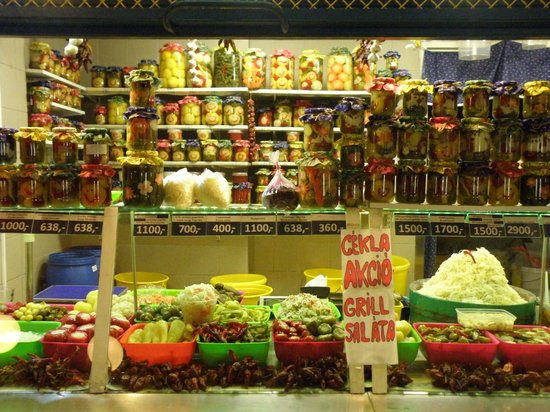
If you’ve seen it all in the basement and on the ground floor, it’s time to grab a bite at the food court on the first floor. Hungry visitors can taste some of the most famous Hungarian dishes, and popular street food, like stuffed cabbage rolls, goulash soup, chicken paprikash, lángos, or Hortobágy style meaty pancakes.
Extra tip:
Be sure to have some Hungarian currency on you because most sellers don’t accept cards.
And if you’re thinking of taking a piece of Budapest with you, a selection of souvenirs also awaits at Central Market Hall. Our favorites are the edible ones, like Pick salami, Gyulai sausage, paprika from Szeged or Kalocsa, and goose liver, but you can also find Hungarian staple products, such as Zsolnay porcelain, Matyó embroidered covers, or the Rubik cube at the market hall.
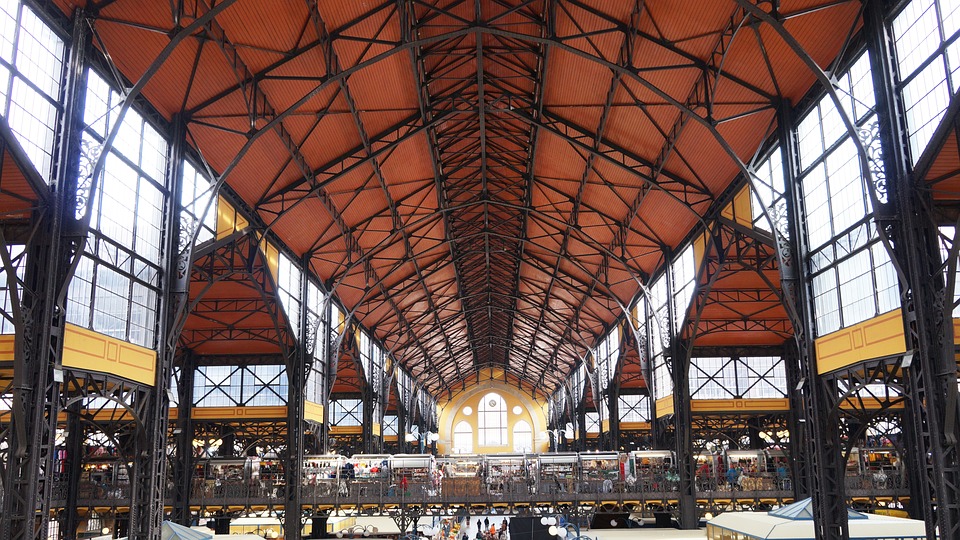
Lesser known facts about the Big Market Budapest
- According to the original design, besides the central canal, railway tracks also led to the market hall, bringing fresh goods from the quay every day.
- It was not only the waterway and the railway tracks that kept the local products fresh, though. Peculiar as it may sound, a fenced poultry-yard also played a crucial part in the market’s ecosystem, providing a constant flow of fresh eggs and meat to the customers.
- Since it was forbidden to sell food on the first-floor gallery, farmers were selling crates, baskets, stationery products, and knickknacks to the customers, just like they do today.
- The building was declared a monument in 1977, and yet its renovation only started more than a decade later in 1991.
- Even though the main entrance of the Central Market Hall is at Fővám tér, you can also access the market from behind, entering from Csarnok tér. Rumor has it, if you head to the right-wing of the hall from this direction, you can discover the most traditional part of the market.
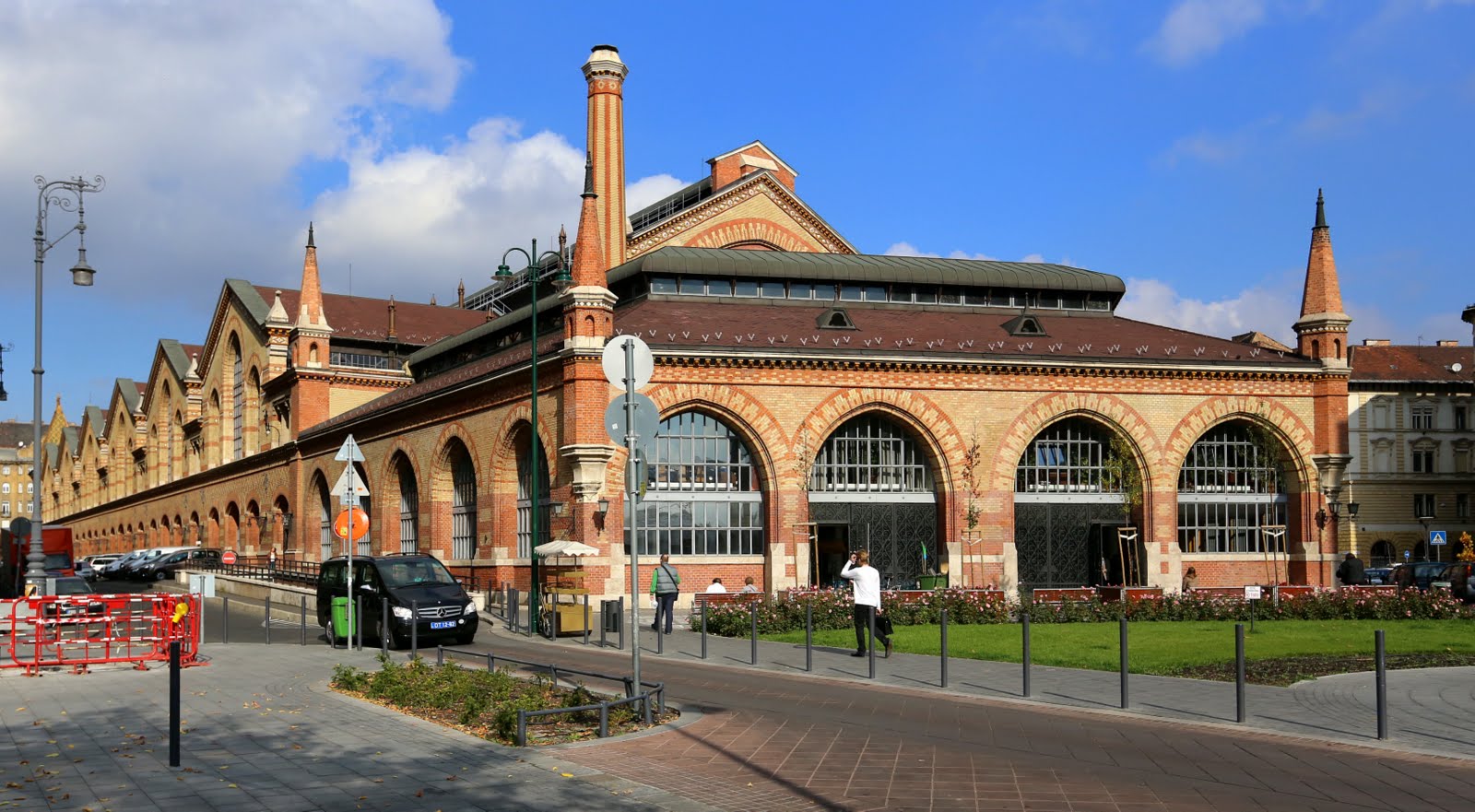
When to visit the Central Market Budapest
It will probably not catch you by surprise that the Central Market Hall is the busiest in the mornings – it’s a market after all. If you’d like to experience the peak of its vibrant whirl, Saturday morning is probably the best time. But if you’re more into casually strolling along the sidewalks, hopping from stall to stall, you may want to arrive after the rush hours.
Opening hours
The market is open from Monday to Friday between 6 AM and 6 PM, and on Saturday between 6 AM and 3 PM (but closed on Sundays), which gives you more than enough time to explore the three floors. Keep in mind, however, that many vendors start shutting their blinds an hour before the closing time of the building, so make sure to arrive in time.
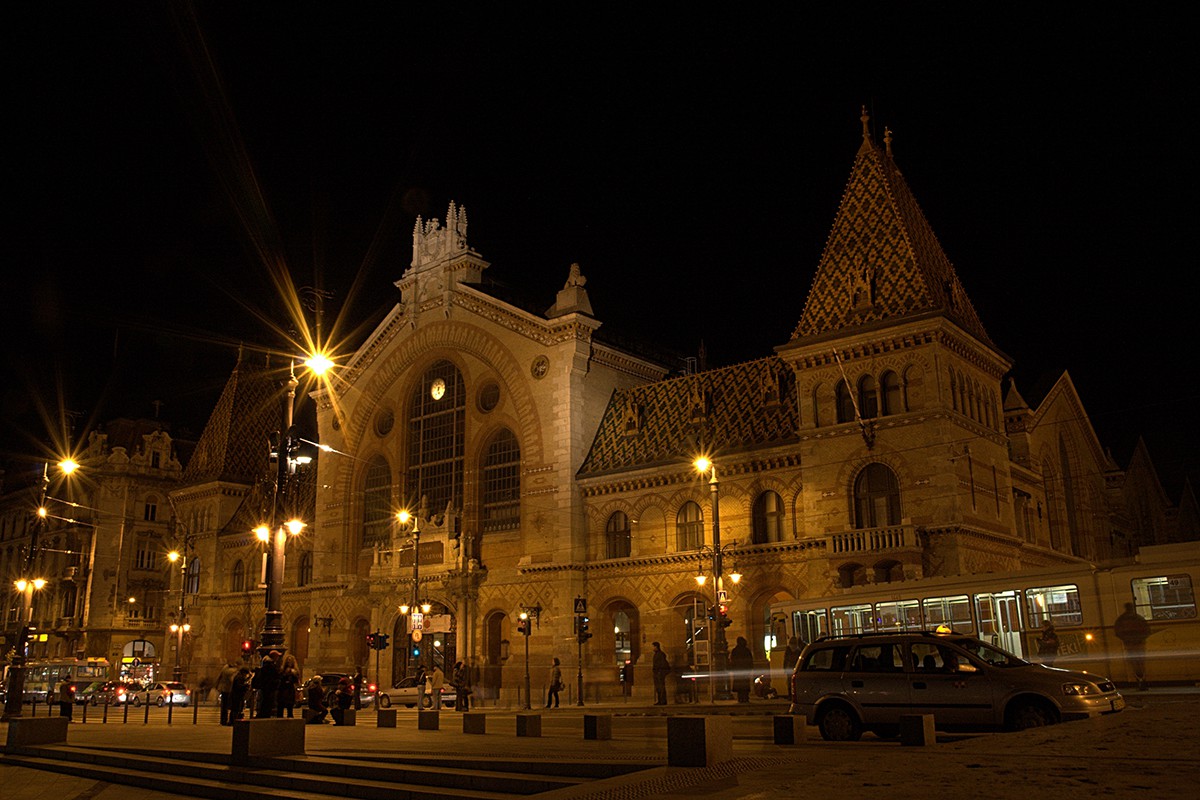
Guide to the Great Market
How to get to the Great Market Hall Budapest?
Located at Fővám tér, a busy junction of metro, tram, and bus lines, Central Market Hall is within easy reach from each part of downtown Budapest. You can get here by metro line 4 (the green line), tram Nr. 2, 47 and 49, as well as bus Nr.15, 83 and 115. Alternatively, you can also get on a hop-on hop-off bus right in front of the market and get a complete tour around the city.
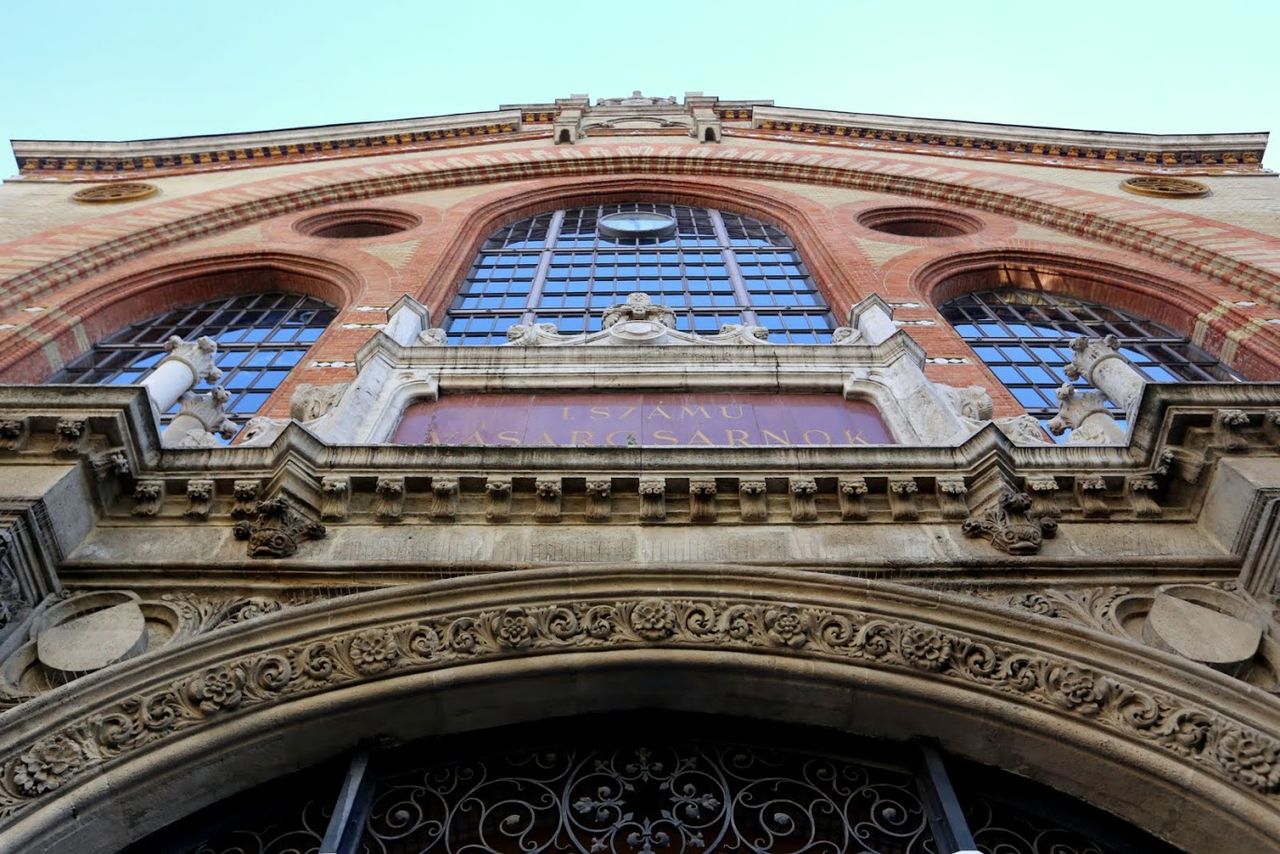
Q & A
- Where is the Central Market Hall in Budapest?
- The Central Market Hall is situated at Fővám tér, on the Pest side, near the Liberty Bridge and the city’s most popular fashion street, Váci utca. You can get there by tram Nr. 2, 47 and 49, metro line 4 (the green line), and buses.
- Is the Budapest Central Market Hall worth a visit?
- Being the largest and oldest indoor market in Budapest, the Central Market Hall is definitely worth a visit. The market is located in a prestigious neo-Gothic building with Zsolnay tiling, which in itself makes it a must-see tourist attraction, not to mention that the inside offers a variety of fresh products, local goods, and Hungarian meals. And the best part? Even CNN called it the best market in Europe.
- When is the Budapest Central Market Hall open?
- The Central Market Hall is open from Monday to Friday from 6 AM until 6 PM, and on Saturday from 6 AM until 3 PM, but it is closed on Sundays. Please bear in mind that many vendors only accept cash, so make sure to have Hungarian Forints with you.
Summary of
Central Market Hall
tuesday 06:00:00 – 18:00:00
wednesday 06:00:00 – 18:00:00
thursday 06:00:00 – 18:00:00
friday 06:00:00 – 18:00:00
saturday 06:00:00 – 15:00:00
su closed.
By visiting Budapest don’t forget to check Budapest Great Market Hall. Whether you want to wander among the food stalls, have a nice chat with the food vendors or would like to eat at the restaurant upstairs, the Great Hall is for you. Budapest’ history and culture cannot be fully understood without this experience.
More interesting and useful tips
Do you want to know everything about the Hungarian currency? Check our article in the topic!
If you want to know where to buy the best food and drinks in Budapest, this grocery store list is just for you!




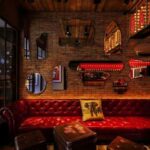





Your experience is important.
Anything you have not found?
Ask a Question
Please log in to write a review.
There is no review yet.